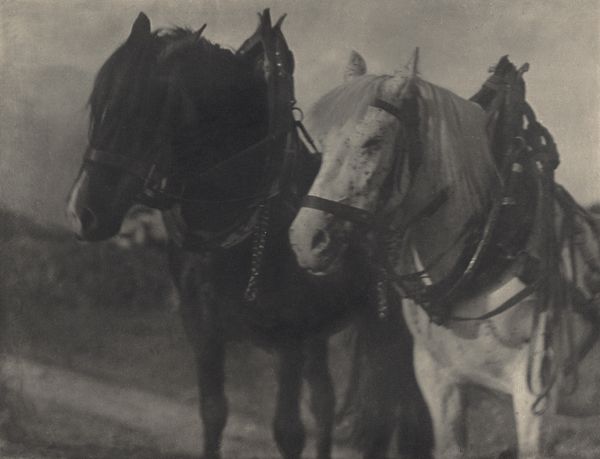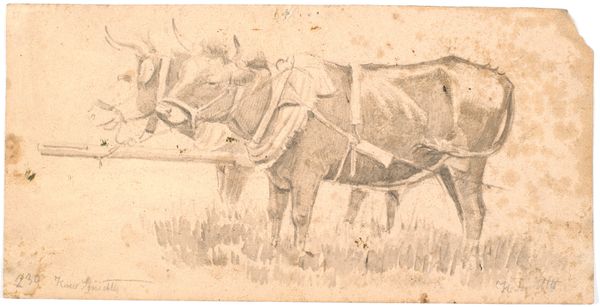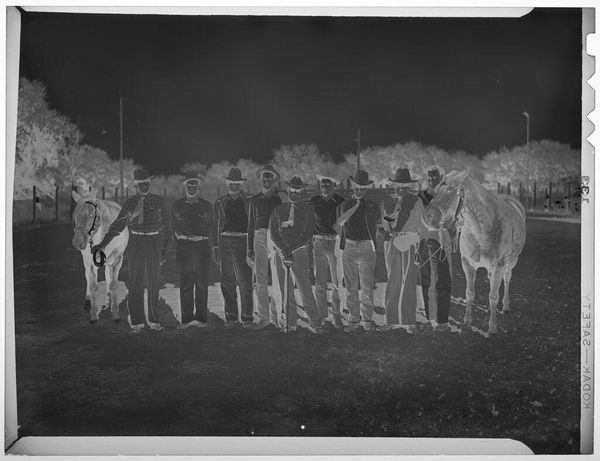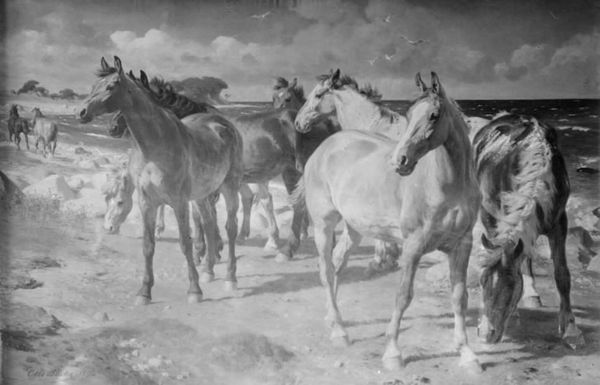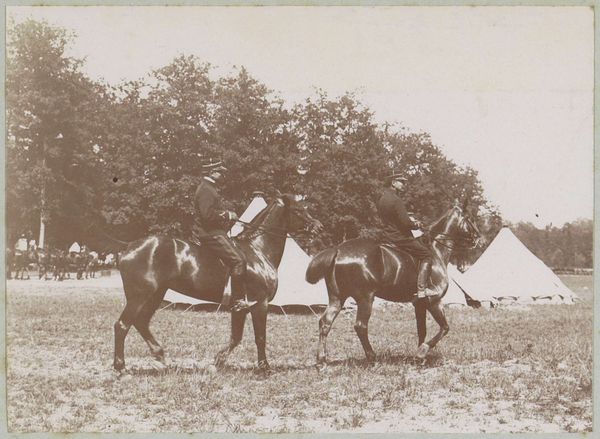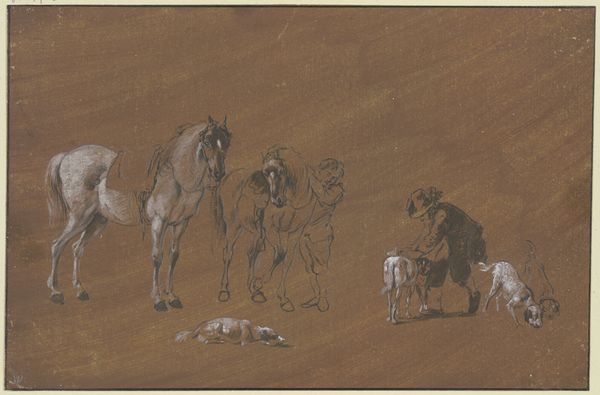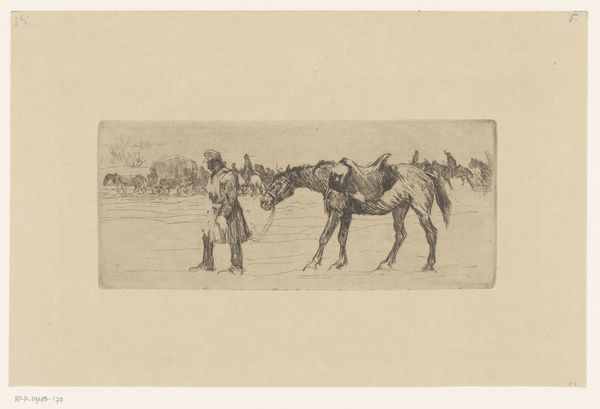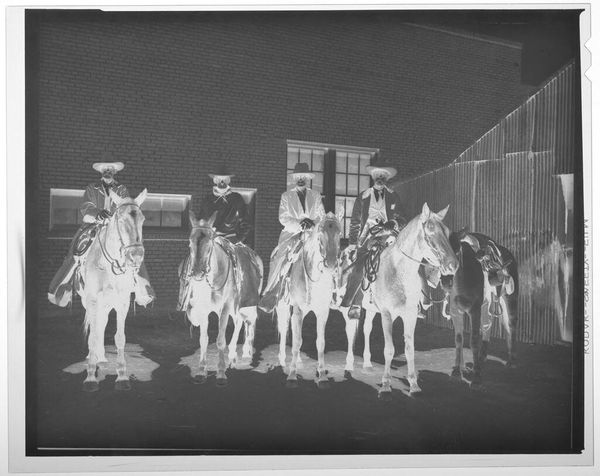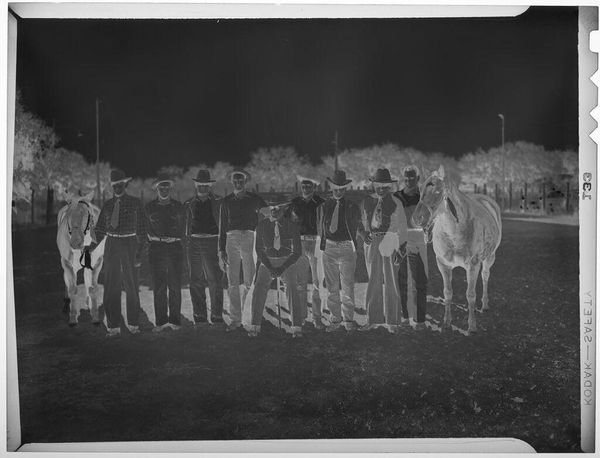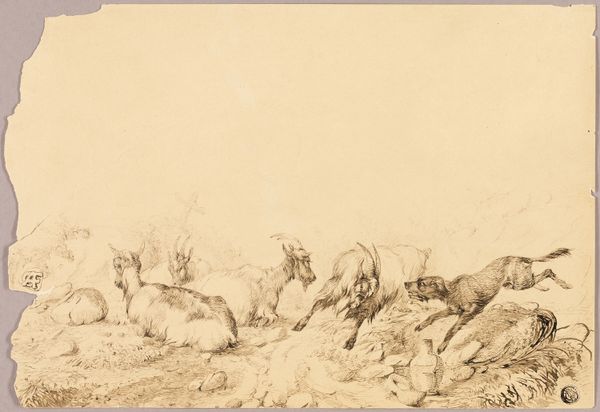
photography, gelatin-silver-print
#
portrait
#
16_19th-century
#
animal
#
landscape
#
photography
#
horse
#
gelatin-silver-print
#
19th century
#
realism
Dimensions: height 108 mm, width 166 mm
Copyright: Rijks Museum: Open Domain
Curator: Ottomar Anschütz’s gelatin silver print, “Paarden op stal,” created around 1884, captures a group of horses confined in a stable. Editor: It's strikingly still, almost claustrophobic. The sepia tones contribute to this antiquated feel. It also draws attention to the play of light and shadow across the horses' forms. Curator: Anschütz was groundbreaking in photographic studies of motion, and the stillness here is an interesting counterpoint. One wonders about the social function of these stables in late 19th-century Germany and what these horses represented— perhaps a symbol of power, of rural labor contained, commodified? Editor: Certainly, but formally speaking, the composition leads your eye into a tunnel. The horizontal line created by the wooden bar and heads brings about rhythm. I'm fascinated by how this visual architecture shapes our perception. It transforms the idea of animal containment. Curator: Photography at this time was also heavily shaped by socio-political currents. With expanding print culture, such images helped propagate certain notions, rural romanticism alongside perhaps class distinctions. This particular framing lends itself to many of the period's prevailing themes in society and governance. Editor: Yet it feels less documentary, doesn't it? There’s a deliberate artistic choice. The tonality softens what would otherwise be harsh, factual record-keeping. This moves us away from objective recording and deeper into artistry. Curator: Perhaps Anschütz himself grappled with art and utility as photography matured. I wonder, how aware was he of the complex cultural landscape when he took that picture? I believe this is essential in appreciating it today. Editor: A valid historical point! I find this interplay with photographic aesthetics enriching. Examining Anschütz’s picture closely reveals those subtle touches often ignored yet speak volumes about his methodology, regardless of his cultural awareness.
Comments
No comments
Be the first to comment and join the conversation on the ultimate creative platform.
